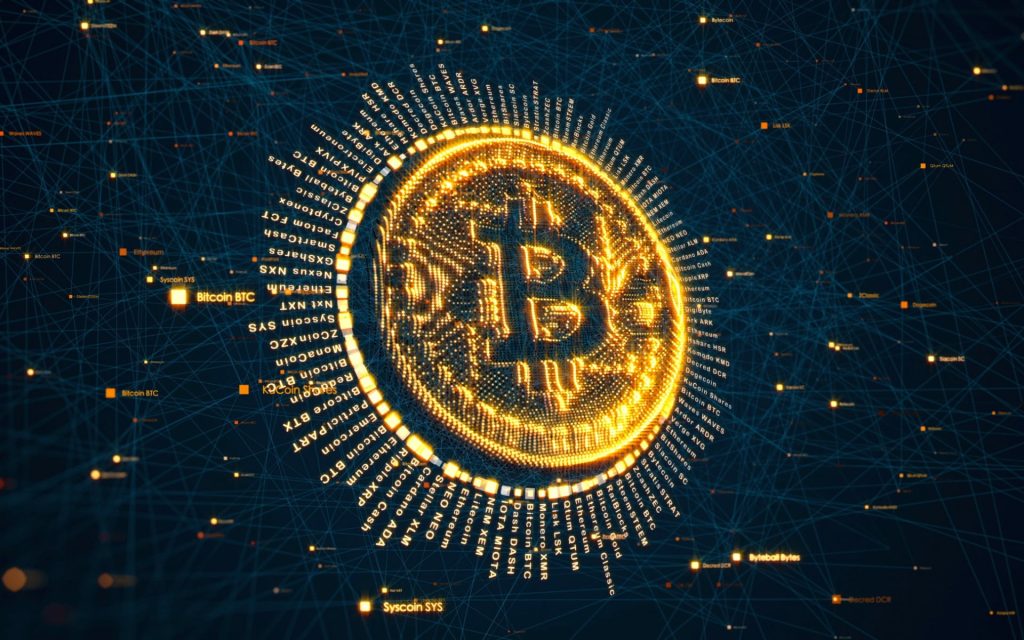Bitcoin is a cryptocurrency that relies on encryption for its production and management rather than central authorities. Bitcoin is currently predominantly used as a store of value, despite its initial purpose as a medium of commerce. Bitcoin was invented and implemented by Satoshi Nakamoto, who combined previously existent ideas from the cryptography field. Bitcoin has grown rapidly to become a major online and offline store of value. Some businesses started accepting bitcoin in the mid-2010s.
Background
Digital cash technologies began with David Chaum and Stefan Brands’ issuer-based e-cash protocols before bitcoin. In 1992, cryptographers Cynthia Dwork and Moni Naor hypothesized that computational puzzle answers could be valuable. Adam Back independently rediscovered the idea in 1997, when he created hashcash, a spam-control proof-of-work technique. Wei Dai’s b-money and Nick Szabo’s bit gold were the first distributed digital scarcity-based cryptocurrencies. Using hashcash, Hal Finney created a reusable proof of work (RPOW).
In his bit-gold proposal for inflation control, Nick Szabo also investigated a Byzantine fault-tolerant agreement protocol based on quorum addresses to store and transfer chained proof-of-work solutions that was vulnerable to Sybil attacks.
Creation
Bitcoin.org was registered on August 18, 2008. On October 31, a cryptography email group received a link to Satoshi Nakamoto’s Bitcoin: A Peer-to-Peer Electronic Cash System. This study showed how to create “a system for electronic transactions without relying on trust” utilizing a peer-to-peer network. Satoshi Nakamoto mined the genesis block (block 0) for 50 BTCs on January 3, 2009, creating the bitcoin network. Genesis contained the text:
The Times, 03/01/2009 The Chancellor considers a second bank bailout.
The Times headline from January 3, 2009 is quoted. This note has been viewed as a genesis date timestamp and a satire on fractional-reserve banking instability.
SourceForge hosted the first open-source bitcoin client on January 9, 2009.
Programmer Hal Finney was an early bitcoin enthusiast, contributor, and recipient. Finney downloaded bitcoin software the day it was launched and received 10 bitcoins from Nakamoto in the first bitcoin transaction on January 12, 2009 (bloc 170). B-money originator Wei Dai and bit-gold creator Nick Szabo were other early supporters.
Nakamoto may have mined 1 million bitcoins early on. As the Bitcoin Foundation’s main bitcoin developer, Gavin Andresen became the ‘anarchic’ bitcoin community’s closest public face after Nakamoto left bitcoin.
Satoshi Nakomoto, Creator of Bitcoin
It is believed that “Satoshi Nakamoto” invented the bitcoin system in 2008 and launched it in 2009. Nakamoto created most of the official bitcoin software and modified and posted technical details on the bitcoin forum. Dai, Szabo, and Finney have been suggested as Satoshi Nakamoto, although all deny it. Also considered is the notion that Satoshi Nakamoto was a European financial computer collective.
The New Yorker and Fast Company investigated Satoshi Nakamoto’s identity. Michael Clear and Vili Lehdonvirta were among the New Yorker’s suspects. Fast Company found circumstantial evidence linking Neal King, Vladimir Oksman, and Charles Bry’s August 15, 2008, encryption patent application to bitcoin.org’s 72-hour registration. Textual analysis showed that bitcoin’s whitepaper and the patent application (#20100042841) included the words “computationally impractical to reverse” in connection with networking and encryption. Three inventors publicly denied being Satoshi Nakamoto.
Ted Nelson suggested Shinichi Mochizuki was Satoshi Nakamoto in May 2013. Later in 2013, Israeli researchers Dorit Ron and Adi Shamir suggested Silk Road-linked Ross William Ulbricht was behind the cover. A bitcoin transaction network study led the two researchers to suspect. Ron and Shamir recanted their claims.
Bitcoin engagement by Nakamoto appears to finish in mid-2010. Nakamoto told a bitcoin contributor in April 2011 that he had “moved on to other things.”.
Stefan Thomas, a Swiss coder and community member, graphed Nakamoto’s 500-plus bitcoin forum postings’ time stamps. The chart indicated a dramatic fall to essentially no entries between 5 and 11 a.m. Greenwich Mean Time. This trend continued even on Saturdays and Sundays, suggesting Nakamoto was asleep around 5 a.m. to 11 a.m. GMT, which is midnight to 6 a.m. Eastern Standard Time. Other indicators showed Nakamoto was British: He used British English spellings like “optimise” and “color” in his forum discussions and bitcoin source code comments, and he encoded a Times headline in the genesis block.
The bitcoin whitepaper’s wording resembles Nick Szabo’s “bit gold” publications, according to an anonymous blogger’s search. A May 2011 article by Nick denied being Satoshi and revealed his official view on bitcoin and Satoshi.
Dorian S. Nakamoto of Temple City, California, was doxed by Newsweek’s Leah McGrath Goodman in March 2014 for claiming his birth name was Satoshi. Many criticized her techniques and conclusions.
Andrew O’Hagan wrote on Nakamoto for the London Review of Books in June 2016.
Prices and Value History
This growth may have been caused by the European sovereign-debt crisis, particularly the 2012–2013 Cypriot financial crisis, FinCEN pronouncements enhancing the currency’s legal status, and rising media and Internet attention.
BTC markets were mostly in US currency until 2013.
Some termed BTC prices a bubble as their market capitalization surpassed US$1 billion. BTC declined from $266 to $50 in early April 2013 and then rose to $100. The price decreased steadily below $70 over two weeks, starting in late June 2013. Price recovered, topping around $140 on October 1. The FBI confiscated the Silk Road on October 2. The episode triggered a $110 flash crash. The price recovered to $200 two weeks later. The latest run cost $200 on November 3 and $900 on November 18 November.BTC reached $1,000 at Mt. Gox on November 28, 2013. On March 2, 2017 the price of 1 BTC surpassed the spot price of an ounce of gold for the first time.


